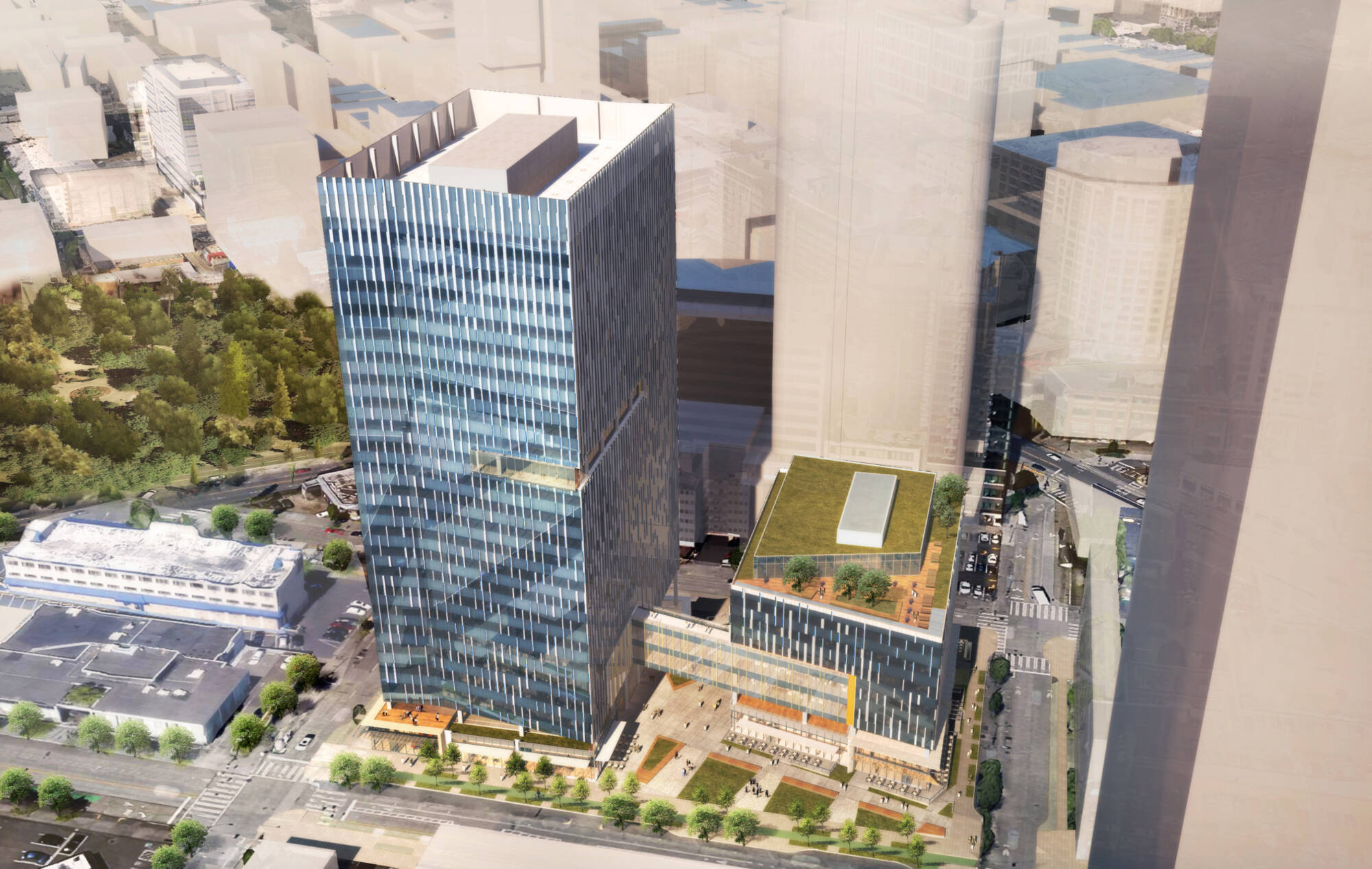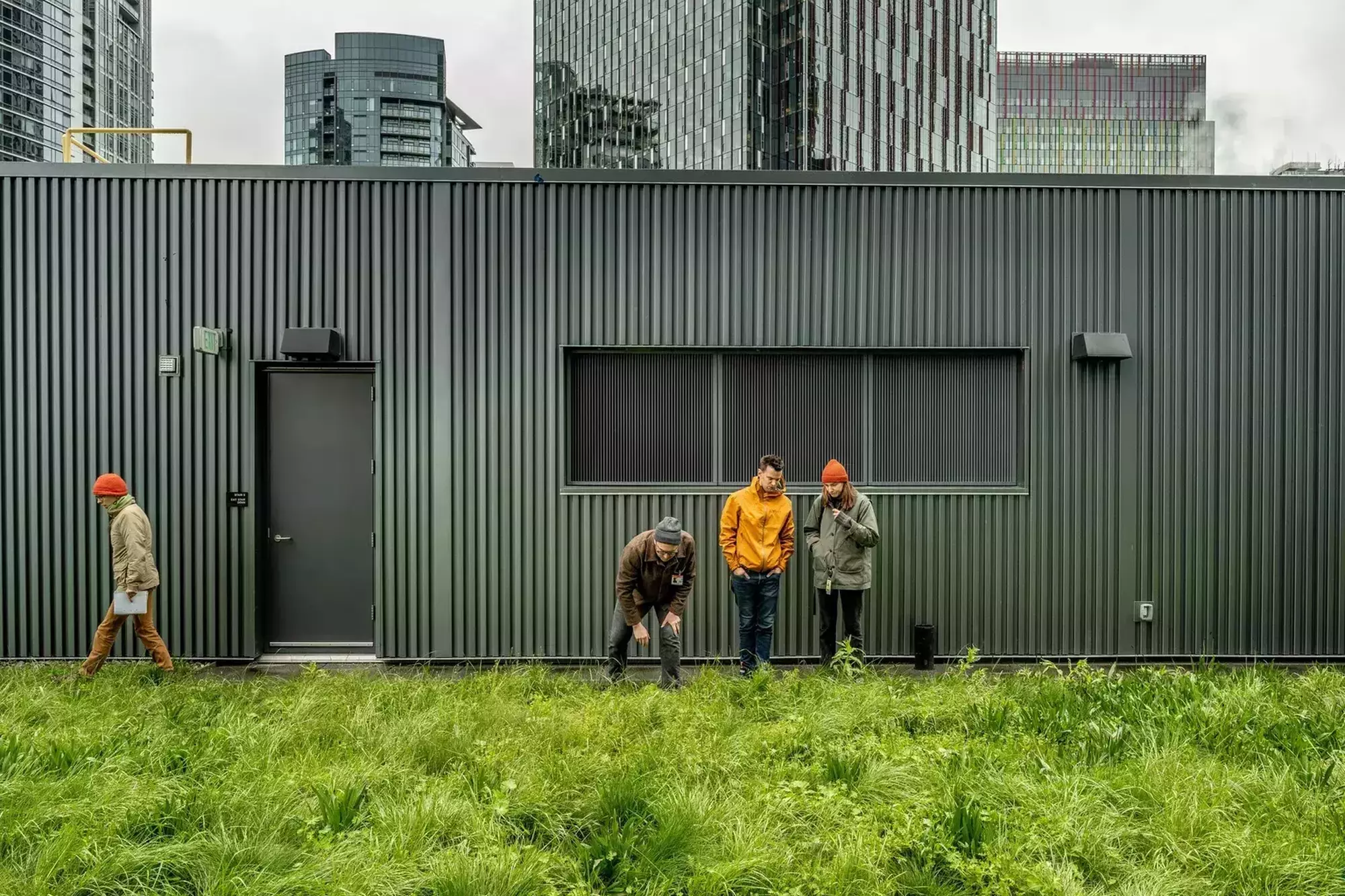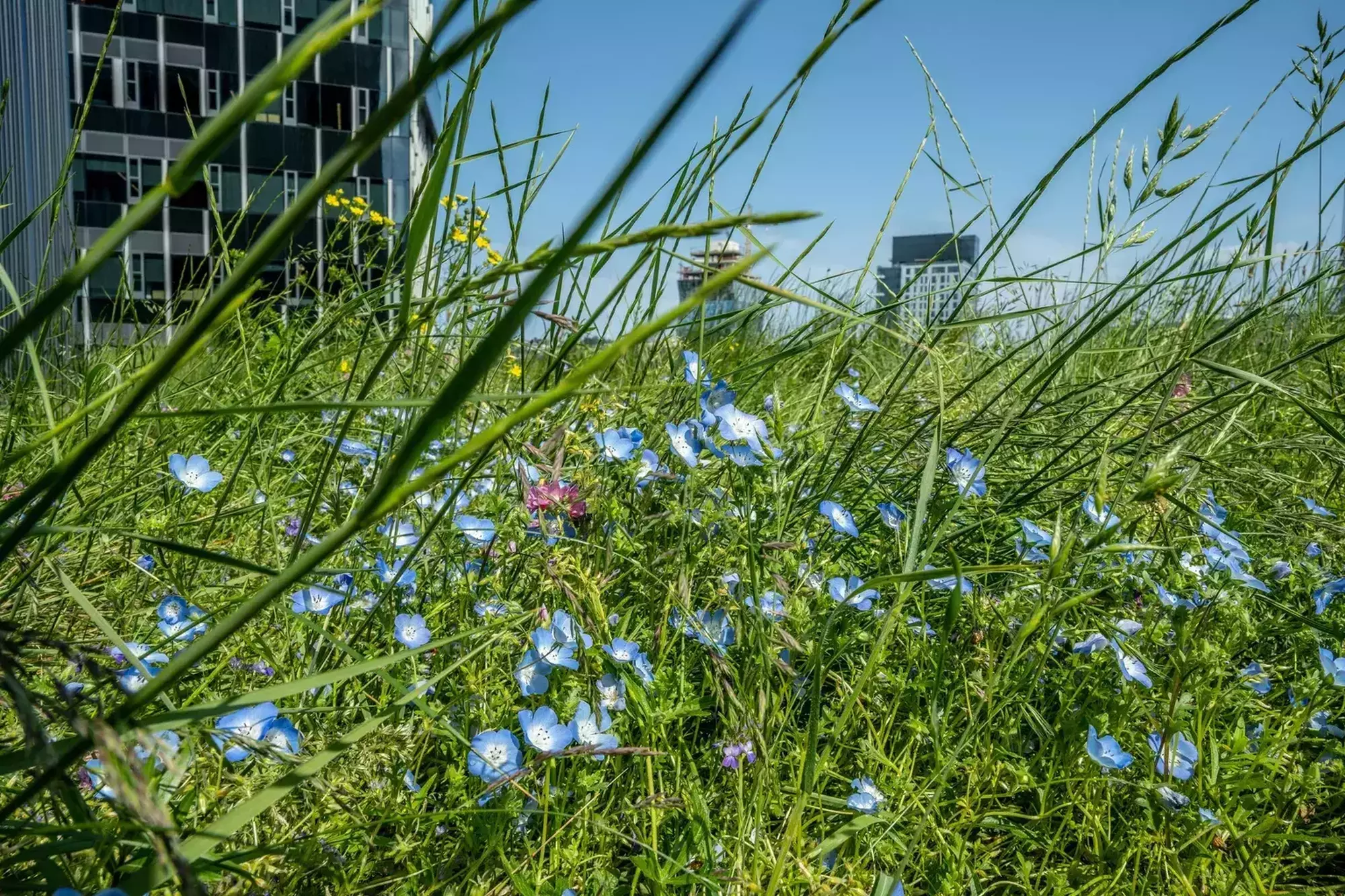Amazon’s Rooftop Prairie Welcomes Nature into the Heart of Seattle
08/09/23

Home to Amazon and Mary’s Place Family Center, Graphite’s Nitro South project in the Denny Triangle is also residence to native birds, bees, and wildflowers atop a unique rooftop Prairie. A recent Seattle Times profiled this innovative, sustainable, urban ecosystem, designed in collaboration with Graphite’s landscape design consultant, Site Workshop.

(images ©Stewart Isett/courtesy SiteWorkshop)
By Lorene Edwards Forkner | Special to The Seattle Times
OVER THE PAST couple of hundred years, human development has destroyed roughly 97% of our region’s native prairies, to say nothing of excluding the Indigenous stewards who sustained the land for millennia. Yet cities, the very apex of development, are not divorced from nature. In fact, they even can become biodiversity hot spots. It just takes an expansive vision, deep knowledge and permission to plant the skyline.
SiteWorkshop is a Puget Sound landscape architecture firm that believes in nature. According to the firm’s website, its approach is to design and advocate for the “artful, equitable and ecological transformation of the public realm.” This includes creating and managing novel landscapes that function as ecologically rich prairies. On rooftops.

Remaining prairies in Western Washington are found south of Puget Sound and in the San Juan Islands on exposed sites with rocky soil. Historically, Indigenous peoples burned the land to prevent trees from invading the site. “In many ways, a prairie is as much a relationship as it is a place,” says horticulturist Matt Wood, SiteWorkshop principal. Wood describes a prairie as a “cultural landscape,” one that relies on care and tending.
Prairies are packed with plants, primarily grasses and herbaceous flowering plants, that grow in full sun and blasting wind, and endure seasonal dry periods — challenging conditions that happen to match those found on an urban rooftop. So why not plant prairies up there and invite nature into the heart of the city?
A rooftop prairie is a resilient collective that’s always changing as plants compete and respond to external conditions. Plant diversity translates to a longer bloom season, which allows pollinators and insects more time to forage. Grasses and the hollow stems of some flowering plants offer nesting habitat, which bumps up insect numbers. Then birds show up to feed on insects and seeds. Of course, there are limits to how high up a planting can be and still attract native insects.

The roof at Nitro South, an Amazon property in downtown Seattle, is on levels nine and 10 (about 100 feet up). People involved with the project have observed numerous native insects, including honeybees and native bumble bees, hover flies and a lone sweat bee. Insect populations take time to establish, but in time more flowers and plants will attract more foraging insects. “Imagine what might be possible if adjacent properties converted their rooftops to prairie,” Wood muses.
The project was installed beginning in late 2019 using what Wood calls a “kitchen sink” approach: a mix of seed, plugs, bare root, bulbs and some container stock. Plants include yarrow (Achillea millefolium), showy fleabane (Erigeron speciosus), wild blue flax (Linum lewisii) and many more native species commonly found across Pacific Northwest prairies and throughout the West.

Today, views from adjacent towers shift as the landscape at Nitro changes throughout the year. Fall rains spur new growth on grasses, sedges and some annuals, which helps suppress winter weeds. Rising temperatures trigger more growth, culminating in a bloom season that runs from April to July. With summer heat and dry soil, many plants go dormant. “There’s no way around it,” Wood says. “That’s how dry-growing West Coast grasslands look in the late season, and it has a special beauty all its own.”
According to Wood, a rooftop prairie requires far less maintenance than a more intensively managed landscape, making it a straightforward and cost-effective way to work more nature into cities. In addition to supporting wildlife, buildings benefit from reduced cooling costs, while intercepting stormwater lessens the pressure on municipal systems.

But prairies aren’t just for roofs. Wood says it’s time to prioritize nature in urban development: “Given all the benefits that a nature-rich environment brings, investing in nature can end up being the most cost-effective thing we can do to improve the quality of daily life and the possibility of a livable future.” (Visit siteworkshop.net and search under “projects” to find other prairie and ecologically friendly public landscapes to visit.)
This article originally appeared in the Seattle Times on August 5, 2023. The original content may be found here.
Related Insights
Vulcan explores enrolling office development in Seattle's ultra-green program
11/24/20
By Marc Stiles – Staff Writer, Puget Sound Business Journal Aug 26, 2020, 10:21am EDTVulcan Real Estate is proceeding with plans to build an office tower in South Lake Union, though a company executive said groundbreaking could be several years out.Google Takes Occupancy of Vulcan’s South Lake Union Campus
11/25/20
Connect Seattle October 8, 2019Mary's Place Family Shelter at Amazon in the Regrade
06/02/21
Working in tandem with Mary’s Place, the Amazon Global Real Estate and Facilities team, Seneca Group and GLY construction, the Graphite design team was able to radically re-imagine what a family shelter could be by occupying sections of eight floors in the company’s complex.